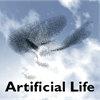britenberg车辆作为发育神经模拟
IF 1.5
4区 计算机科学
Q4 COMPUTER SCIENCE, ARTIFICIAL INTELLIGENCE
引用次数: 12
摘要
在行为科学、人工智能和神经生物学领域,将大脑和行为联系起来是一个长期存在的问题。作为人工和生物神经网络模型的标准,一个完全成熟的大脑的模拟被呈现为一张空白的石板。然而,这并没有考虑到生物发展和发展学习的现实。我们的目的是模拟一个表现出复杂行为的人工有机体的发展。我们介绍了三种替代方法来演示如何实现发展性具身代理。由此产生的布赖滕贝格载体(dbv)将产生从刺激反应到类似集体运动的群体行为等一系列行为。我们将把这项工作放在人工大脑网络领域,以及更广泛的主题,如具身认知、反馈和涌现。我们的观点通过三个软件实例来举例说明,这些实例展示了如何使用BV-遗传算法混合模型,多感官Hebbian学习模型和多智能体方法来处理BV开发。我们介绍了优化空间认知(车辆-遗传算法混合模型)、连接行为和神经模型(多感官Hebbian学习模型)和累积分类(多智能体方法)等用例。总之,我们考虑了发育神经模拟方法的未来应用。本文章由计算机程序翻译,如有差异,请以英文原文为准。
Braitenberg Vehicles as Developmental Neurosimulation
Connecting brain and behavior is a longstanding issue in the areas of behavioral science, artificial intelligence, and neurobiology. As is standard among models of artificial and biological neural networks, an analogue of the fully mature brain is presented as a blank slate. However, this does not consider the realities of biological development and developmental learning. Our purpose is to model the development of an artificial organism that exhibits complex behaviors. We introduce three alternate approaches to demonstrate how developmental embodied agents can be implemented. The resulting developmental Braitenberg vehicles (dBVs) will generate behaviors ranging from stimulus responses to group behavior that resembles collective motion. We will situate this work in the domain of artificial brain networks along with broader themes such as embodied cognition, feedback, and emergence. Our perspective is exemplified by three software instantiations that demonstrate how a BV-genetic algorithm hybrid model, a multisensory Hebbian learning model, and multi-agent approaches can be used to approach BV development. We introduce use cases such as optimized spatial cognition (vehicle-genetic algorithm hybrid model), hinges connecting behavioral and neural models (multisensory Hebbian learning model), and cumulative classification (multi-agent approaches). In conclusion, we consider future applications of the developmental neurosimulation approach.
求助全文
通过发布文献求助,成功后即可免费获取论文全文。
去求助
来源期刊

Artificial Life
工程技术-计算机:理论方法
CiteScore
4.70
自引率
7.70%
发文量
38
审稿时长
>12 weeks
期刊介绍:
Artificial Life, launched in the fall of 1993, has become the unifying forum for the exchange of scientific information on the study of artificial systems that exhibit the behavioral characteristics of natural living systems, through the synthesis or simulation using computational (software), robotic (hardware), and/or physicochemical (wetware) means. Each issue features cutting-edge research on artificial life that advances the state-of-the-art of our knowledge about various aspects of living systems such as:
Artificial chemistry and the origins of life
Self-assembly, growth, and development
Self-replication and self-repair
Systems and synthetic biology
Perception, cognition, and behavior
Embodiment and enactivism
Collective behaviors of swarms
Evolutionary and ecological dynamics
Open-endedness and creativity
Social organization and cultural evolution
Societal and technological implications
Philosophy and aesthetics
Applications to biology, medicine, business, education, or entertainment.
 求助内容:
求助内容: 应助结果提醒方式:
应助结果提醒方式:


